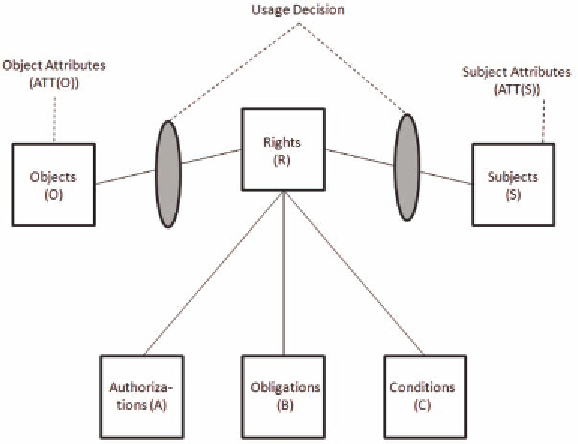Database Reference
In-Depth Information
Figure 1. The UCONABC usage control model from Park and Sandhu (2004)
Both topics are very active fields of research.
be used to infer some secret information. Data
warehouses are built to support data mining. If a
data mining tool can be used to derive sensitive
information from unclassified information legiti-
mately obtained, there is an inference problem,
as discussed by Bertino et al. (2006).
Well-established protection concepts for statis-
tical database security, such as: restriction-based
techniques, query set size control, expanded query
set size control-audit based (assumed information
base), perturbation-based techniques, data swap-
ping (distribution unchanged), random-sample
queries, fixed perturbation (modify data), and
query-based perturbation. For an in-depth descrip-
tion Castano et al. (1994) and Willenborg and De
Waal (1996) are excellent sources.
Query set size control
Enforcing a minimum
set size for returned information does not offer
adequate protection. Denning (1982) described
trackers that are sequences of queries all within
the size limits allowed by the database; when
combined with AND statements and negations,
information on individuals can be inferred. While
simple trackers require some background infor-
Usage Control
The main problem with data collection is that
people might allow companies to use data for
specific reasons (such as recommending related
products) but do not consent to other uses of the
same data. Usage control byPark and Sandhu
(2004) is a concept that makes it possible to en-
force pre- and postconditions when using data. It
is similar to a traditional reference monitor, only
that the restrictions are enforced during the entire
access, as proposed by Thuraisingham (2005): The
privacy control would “limit and watch access to
the DBMS (that access the data in the database)
(cf. Figure 1).”
Statistical Database Security
A statistical database contains information about
individuals, but allows only aggregate queries
(such as asking for the average age and not an
individual's age). Nonetheless, inference can

Search WWH ::

Custom Search